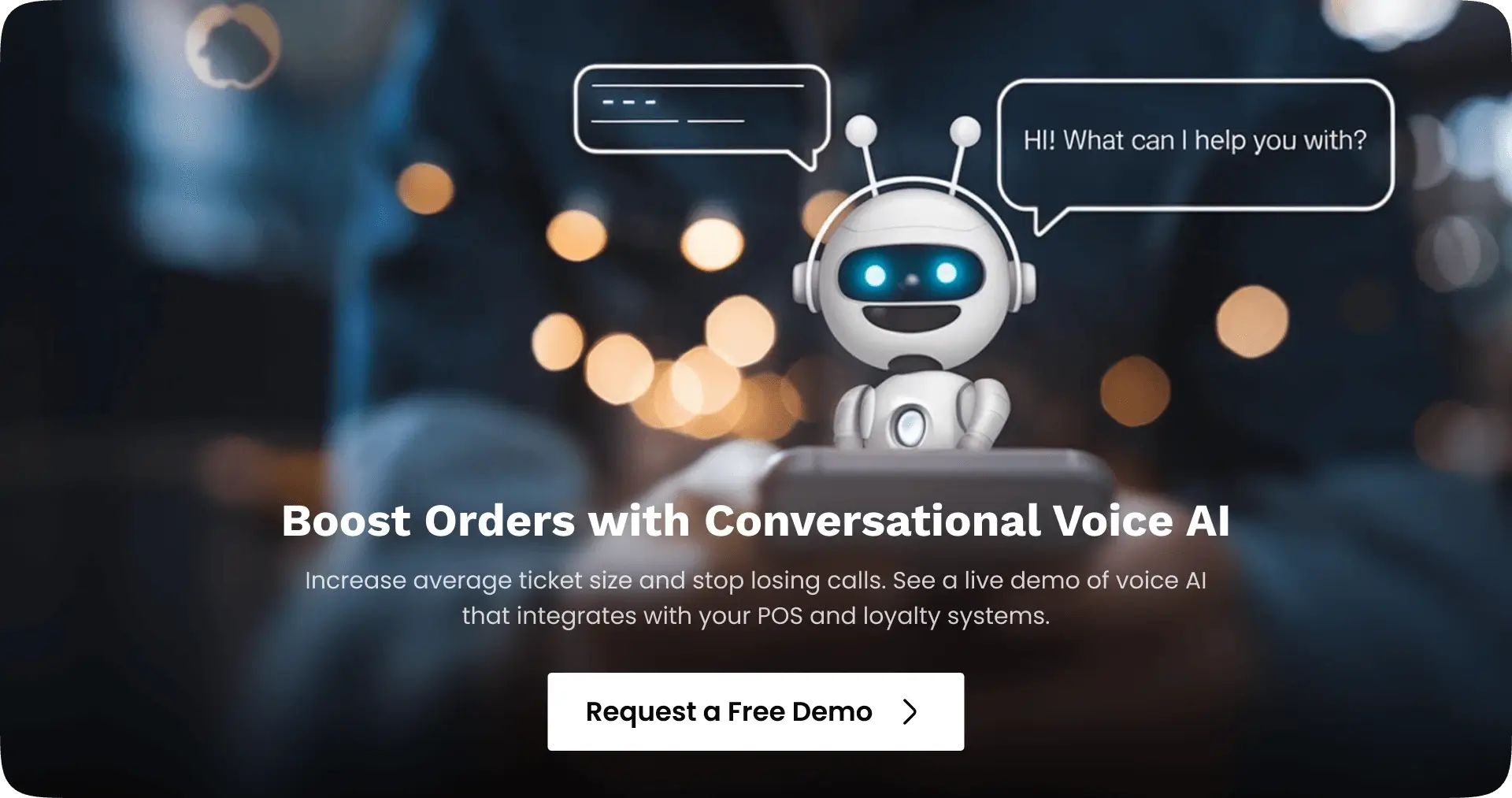How Conversational AI Voice is Transforming Restaurant Orderings

By Darshak Doshi
October 16, 2025
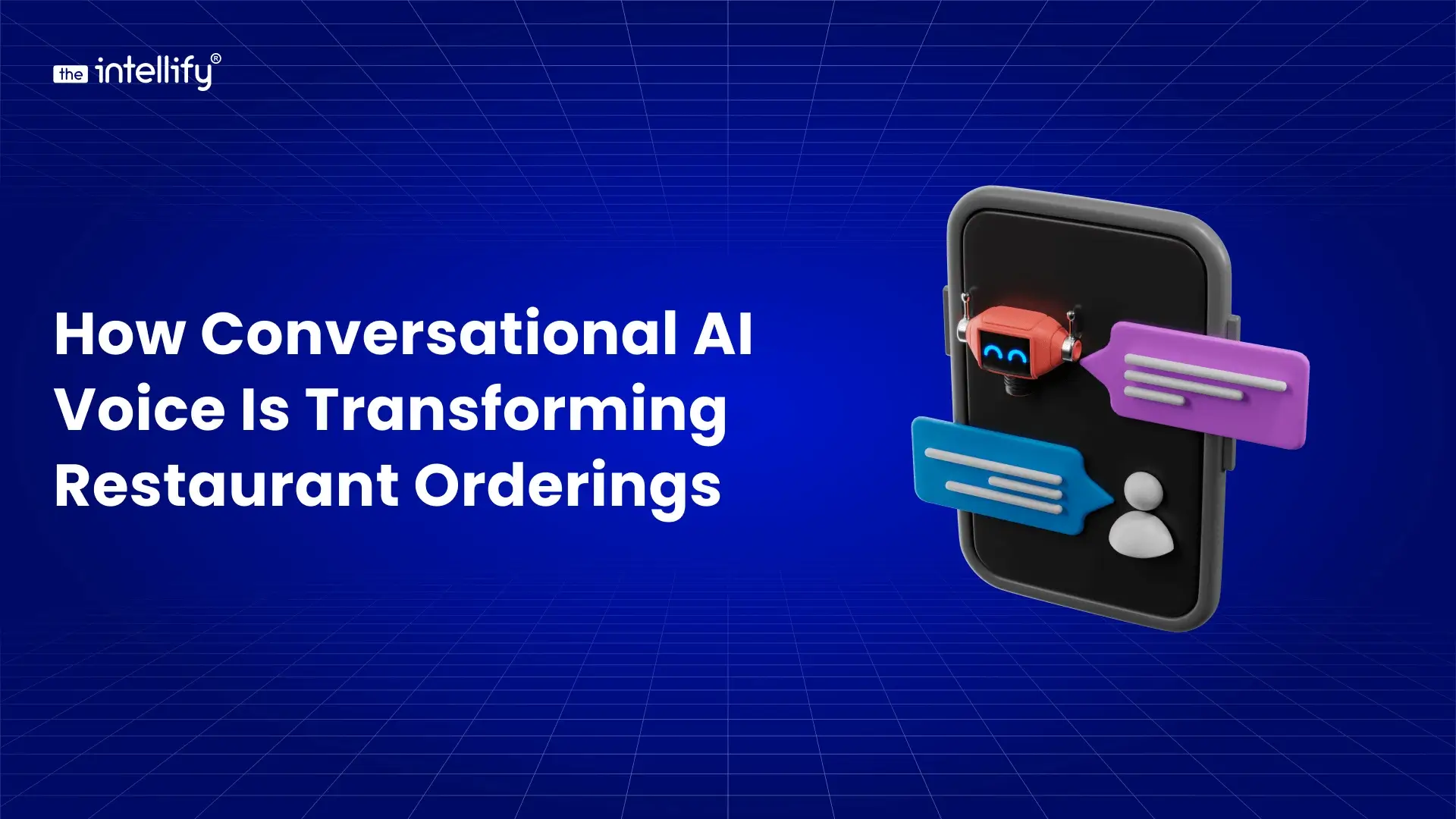
Summary
Conversational voice AI lets customers speak orders via phone, drive-thru, apps, or smart speakers and uses speech recognition + NLP to process, confirm, and route orders directly into POS systems. It reduces missed calls and errors, boosts average ticket size through consistent upsells, and eases staff workload, delivering measurable operational and revenue benefits for restaurants. Early adopters report faster throughput, higher customer satisfaction, and a clear path to scalable, omnichannel ordering.
The U.S. restaurant industry is massive and increasingly competitive. Even a single missed phone call or slow drive-thru can mean lost customers and revenue. To address this, restaurants are turning to conversational AI voice assistants to automate ordering. These systems use advanced speech recognition and natural language processing (NLP) so that customers can simply speak their orders (via phone, drive-thru intercom, app, or smart speaker). The AI captures the spoken request, confirms the items, handles payment, and routes the order to the kitchen or POS system. In effect, restaurants get a round-the-clock “virtual order-taker” that never misses a call. Major chains have already begun deploying this technology; for example, Yum! Brands has rolled out AI drive-thru bots to hundreds of locations, with plans to expand further.
This article explores how conversational voice AI is reshaping restaurant orderingfrom streamlining service and reducing errors to boosting sales and elevating customer experience.
Why Restaurants Are Embracing Voice AI Ordering

Restaurants face a set of persistent challenges, and voice AI addresses many of them:
Never Miss a Call
In busy periods, customers may hang up if forced to wait on hold. Voice AI ensures every call is answered instantly, capturing orders 24/7 and recovering revenue that might otherwise slip away.
Staff Shortages & Burnout
With high turnover and labor constraints, offloading routine order-taking to AI lets human staff focus on food prep, in-house service, and guest experience. This alleviates pressure and reduces stress, especially during peak times.
Consistent Upselling & Accuracy
Human staff sometimes skip upsell prompts or forget modifiers. AI handles upselling systematically (suggesting sides, combos, drinks) and processes orders with near-perfect accuracyeliminating many mistakes caused by misheard instructions.
Handling Order Overload
During peak hours, phone lines and drive-thru lanes can get overwhelmed. Voice AI can field multiple orders simultaneously, reducing customer wait time and smoothing throughput.
Uniform Service Quality
For multi-location chains, AI ensures every outlet follows the same ordering logic, tone, and upsell strategy. That consistency helps maintain brand standards, reduce training complexity, and deliver reliable service.
These benefits, recovering lost calls, reducing labor strain, minimizing errors, and standardizing service, make voice AI an appealing solution for forward-thinking restaurants.
How Voice AI Ordering Works
Conversational voice AI ordering mixes speech recognition, natural language understanding, and system integrations to automate the ordering flow end-to-end:
Capture & Transcription
A customer speaks their order through a phone line, drive-thru intercom, smart speaker, or app. The system records the audio and transcribes it to text.
Natural Language Processing (NLP)
The AI parses the text to identify item names, quantities, modifiers (e.g., “extra cheese,” “no onions”), delivery vs. pickup, etc. It infers customer intent from conversational phrasing.
Order Confirmation
The AI reads back the order (“You ordered a large pepperoni pizza with extra cheese that correct?”). The customer can confirm or correct any misunderstandings.
Payment & Routing
If payment is required, the AI handles it (using stored cards, loyalty balances, or mobile wallet). Then it routes the finalized order into the restaurant’s POS or kitchen display system.
Contextual Services
Advanced systems integrate with loyalty programs, inventory systems (to check in-stock items), and customer history (to apply rewards or suggest previously ordered items). Over time, the AI “learns” from customer interactions to improve responses and suggestions.
By automating each step, voice AI reduces friction and error, delivering a smooth ordering experience for customers and efficient order processing for restaurants.
Key Benefits of Voice AI for Restaurant Ordering
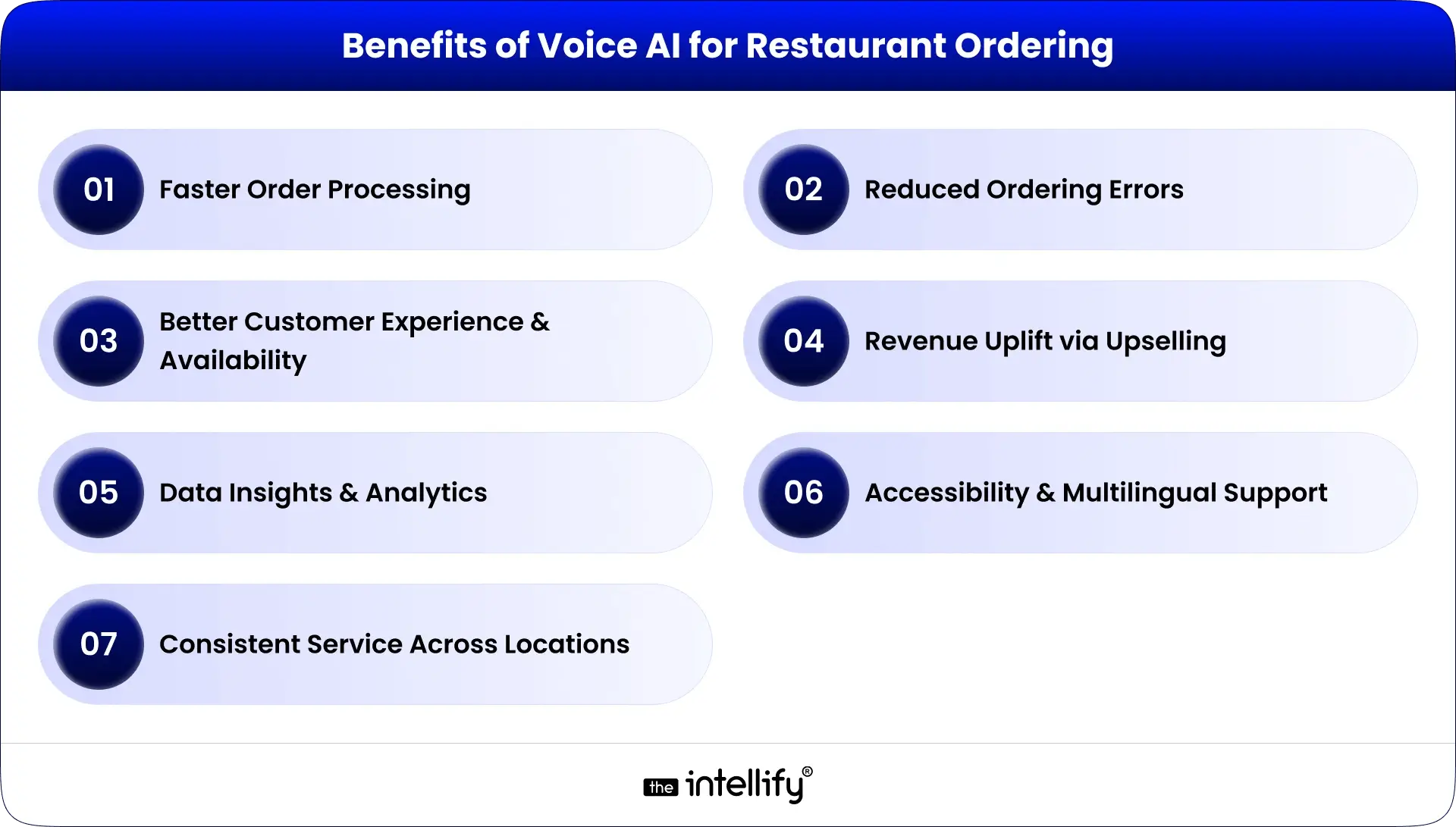
Implementing conversational voice ordering brings several measurable advantages:
1. Faster Order Processing
Speaking is quicker than navigating menus or tapping buttons. The instant transcription and routing save valuable seconds (or even minutes) during high-volume periods.
2. Reduced Ordering Errors
Mistakes or mishearings are common in hectic environments. AI systems capture customer speech exactly and apply modifiers reliably, reducing wrong or incomplete orders.
3. Better Customer Experience & Availability
The convenience of 24/7 ordering without waiting for a human agent is a major benefit. No matter the hour, customers can place orders. Personalization features (like remembering prior orders) make the process feel smoother and tailored.
4. Revenue Uplift via Upselling
AI never forgets to offer extras. Consistent upsell prompts (sides, desserts, drink upgrades) raise average check sizes. Some implementations report uplifts in the range of 20–40% additional revenue purely from automated upselling.
5. Data Insights & Analytics
Every voice-based interaction is data. Restaurants can analyze patterns: peak ordering times, most popular add-ons, frequently rejected upsells, and even customer feedback. This enables more strategic menu planning, staffing, and promotions.
6. Accessibility & Multilingual Support
Advanced voice systems support multiple languages and accents, making ordering more inclusive. A single AI agent can switch languages as needed and better serve diverse customer bases.
7. Consistent Service Across Locations
With a centralized AI, every location delivers the same upsell logic, order prompts, dialogue flow, and brand tone. This consistency is difficult to maintain manually, especially with new staff or high turnover.
Overall, voice AI ordering streamlines the back-end, reduces mistakes, and elevates the front-end customer experiencecreating more value for both diners and restaurants.
Common Use Cases in the Restaurant Environment
Voice AI isn’t limited to just phone-based orders. Here are several real-world application areas:
Drive-Thru Automation
Voice bots can effectively “staff” the drive-thru intercomtaking orders, repeating them for confirmation, and sending them to the kitchen. This reduces wait times and allows staff to focus on order fulfillment rather than order-taking.
Mobile & Web Voice Ordering
Embedding voice assistants in a restaurant’s mobile app or website lets users speak their orders hands-free. Many consumers already expect voice-first interactions via smart devices, so this aligns with growing behavioral trends.
Automated Phone Order Handling
Rather than tying up staff to take calls, AI can answer incoming calls 24/7, manage even complex orders, and process payments by voice. This frees up in-house staff to focus on in-person customer service.
Multilingual Support at Scale
In diverse markets, voice AI can detect and switch between languages or accents mid-conversation. This ensures non-English-speaking customers can place orders accurately by voice.
Loyalty & Repeat Order Recognition
Voice systems can recognize repeat customers (by voice or phone number), recall their favorite orders, and prompt relevant promotions or upsells. This deepens personalization without human involvement.
Table-side and Kiosk Voice Ordering
In dine-in contexts, voice-enabled kiosks or devices let guests order refills, sides, or desserts without waiting for staff. It cuts friction and keeps guests engaged, especially during busy dining periods.
Inventory-Driven Substitutions
When an item is out of stock, voice AI can detect that in real time and suggest an alternative, avoiding order cancellations or customer frustration.
Reservations & Pre-Orders
Voice assistants can handle table bookings and let customers pre-order meals ahead of their arrival. This enables smoother service, especially during peak dining hours.
Smart Home / Voice Assistant Ordering
Integration with platforms like Alexa or Google Assistant means customers can reorder favorites from home. Commands like “Alexa, order my usual pizza” make reordering frictionless and habitual.
These use cases show how voice AI spans phone, drive-thru, web, kiosk, and smart home interfacesmaking it a holistic technology rather than a niche feature.
Real-World Success Stories
Some of the largest brands have already committed to voice AI ordering. Here are notable examples:
1. Yum! Brands (Taco Bell, Pizza Hut)
In 2025, Yum began rolling out AI voice bots in hundreds of drive-thru lanes. Their vision: a future where no human takes the order at the window. The rollout has reportedly improved throughput and order consistency.
2. Domino’s “Dom” Assistant
Domino’s has offered its voice assistant (Dom) for years. Users can place orders via voice on the Domino’s app or smart devices. The system has processed over half a million voice orders, helping Domino’s push 50%+ of sales through digital channels.
3. Wendy’s “FreshAI”
Wendy’s piloted a Google Cloud-based voice bot that suggests combo meals, sides, and beverage upgrades during drive-thru orders, effectively upselling in real time.
4. Panera Bread
Using voice bots, Panera automates large phone orders and catering requests, improving speed and accuracy in its off-site business operations.
5. Mid-size Chains & Independents
Smaller chains (e.g., Donatos Pizza, regional pizza brands) report that voice AI implementation has boosted average ticket size by 20–40% purely from automated upsells. Many also note that missed calls dropped substantially after deployment.
These case studies show that voice AI ordering is not theoretical’s already making operational and financial differences for real restaurants.
How to Implement Conversational Voice AI in Your Restaurant
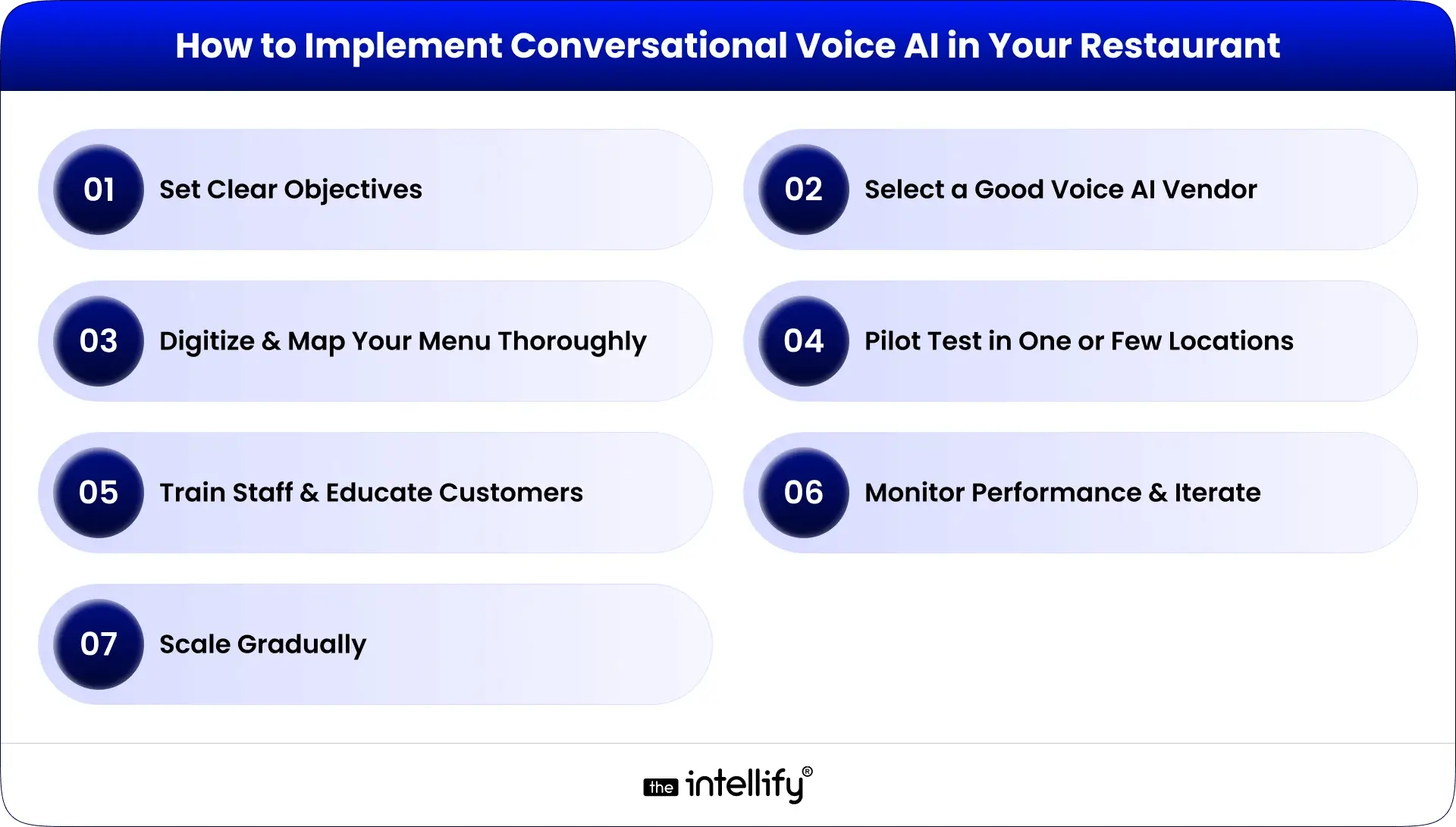
If you’re considering voice ordering, here’s a step-by-step guide:
1. Set Clear Objectives
Decide what you want to accomplish: lower missed call rates, faster drive-thru, increased upsell, or 24/7 ordering. Define success metrics (e.g., % of calls handled by AI, average order size increase).
2. Select a Good Voice AI Vendor
Choose a solution that integrates cleanly with your POS, kitchen systems, payment gateway, and loyalty programs. The vendor should support menu mapping, voice prompt customization, and analytics.
3. Digitize & Map Your Menu Thoroughly
Include every item, combo, modifier, and special variant in your voice system. Build conversation scripts so the AI knows how to prompt for extras (“Would you like a drink with that?”), substitutions, and clarifications.
4. Pilot Test in One or Few Locations
Begin with a small-scale rollout to test performance, accents, noise conditions, and edge-case orders. Use this phase to calibrate the speech models, adjust prompts, and catch bugs before going wide.
5. Train Staff & Educate Customers
Make sure staff know how the system works and how to assist customers with it. Use signage or verbal prompts to let customers know they can order by voice. Encourage them to try it and reassure them they can opt to talk to a human if needed.
6. Monitor Performance & Iterate
Track KPIs like order accuracy, average order value, call deflection, and customer feedback. Use these insights to retrain models, refine upsell scripts, and evolve conversation logic.
7. Scale Gradually
Once confident in performance, expand to all stores. Continue optimizing based on regional accents, differing menu items, or local preferences.
By following these stepsclear goal setting, vendor selection, pilot testing, staff education, and ongoing optimization can adopt voice AI in a controlled, risk-mitigated way.
Challenges & How to Address Them
Voice AI has significant upside, but there are obstacles to watch out for:
Recognition Accuracy Under Noisy Conditions
Restaurants and drive-thrus can be loud. Mishearing accents or fast talkers can degrade performance. Mitigation: robust training with diverse voice samples and fallback prompts (“Sorry, can you repeat that?”).
Complex & Customizable Menus
If your menu has dozens of modifiers (sauces, ingredient swaps, combo bundles), mapping all permutations can be tedious. A staged rolloutstarting with core items and gradually adding complex variantsreduces risk.
Customer Reluctance
Some may prefer speaking to a human for special requests or feel uneasy about interacting with AI. Offer an opt-out (like “Press 0 for human”) and ensure staff step in when needed.
Data Security & Privacy
Voice systems process sensitive dataorders, voices, and payment info. Choose vendors with secure, encrypted pipelines and compliance (PCI, GDPR, CCPA). Be transparent with customers regarding how their voice data is stored and used.
Upfront Investment & ROI Calibration
The cost of voice AI (licensing, integration, hardware, training) must be justified against the benefits. Use pilot/test data to forecast and evaluate increased sales, labor savings, and recovered missed calls.
With careful planning, these challenges can be managed. In most cases, the long-term gains from automation, upselling, and accuracy outweigh the initial hurdles.
The Future of Voice AI in Restaurant Ordering
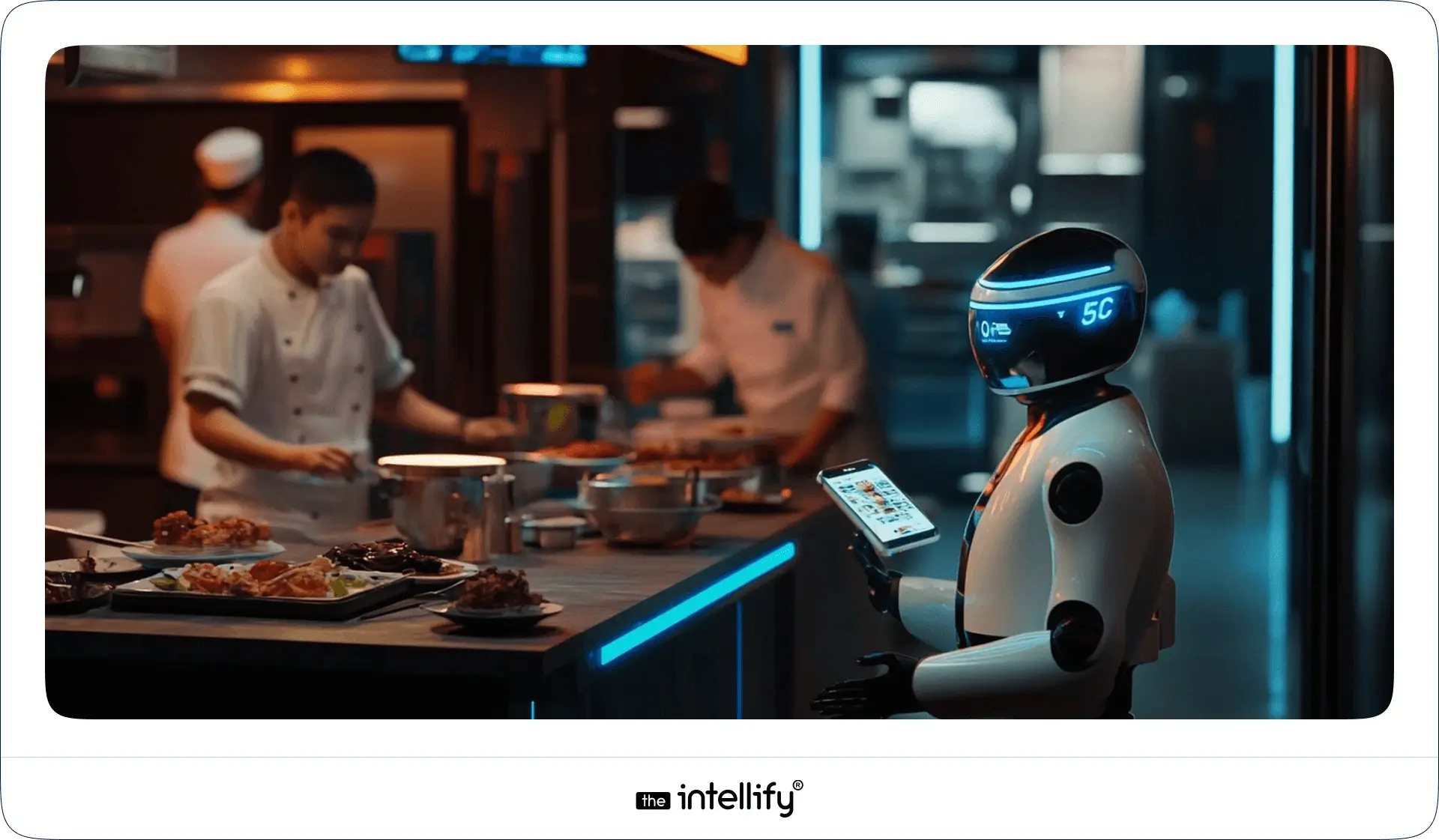
As AI continues to evolve, voice ordering will grow more powerful and pervasive. Some trends to watch:
Hyper-Personalization: Voice assistants will tailor conversations based on individual preferences, dietary restrictions, past orders, and loyalty dataoffering one-click ordering customized to each customer.
Smart Kitchen & IoT Integration: Voice systems will interface with kitchen IoT (ovens, inventory sensors). For example, placing a roast could automatically preheat the oven or send alerts to chefs.
Predictive Analytics Driving Inventory & Staffing: Order data from voice systems will feed forecasting models. Restaurants can stock smarter, staff better, and reduce waste.
Expanded Voice Channels: Beyond drive-thru or phone, voice ordering will be embedded in smart devices, automobiles, wearables, and augmented reality (AR) interfaces.
More Natural & Conversational AI: Advances in NLP will allow AI agents to handle digressions, elicit context, respond conversationally, and adjust pacing. Ordering will feel more like speaking with a human than a rigid bot.
Over time, voice AI won’t just be “an option”; it will become a core pillar of restaurant operations, seamlessly bridging customer voice and restaurant logistics.
Conclusion
Conversational voice AI is no longer experimental; it’s a practical, revenue-driving tool that addresses real restaurant pain points: lost calls, labor strain, slow drive-thrus, and inconsistent upselling. When implemented thoughtfully (clear goals, thorough menu digitization, secure integrations, and a pilot-first rollout), voice ordering improves accuracy, increases average checks, and frees staff to focus on guest experience. Challenges like speech-recognition edge cases and privacy concerns are solvable with good vendor partnerships and ongoing optimization. For U.S. restaurants seeking better throughput and digital-first growth, a carefully executed voice-AI strategy offers strong ROI and positions the brand for the next wave of ordering convenience.
Frequently Asked Questions (FAQs)
1. What is conversational AI voice ordering, and how does it work in restaurants?
Conversational AI voice ordering enables customers to place orders using their preferred method (phone, drive-thru, app, or smart speaker). It transcribes speech using speech recognition and interprets intent with NLP, confirms the order, processes payments if needed, and routes orders to the POS/kitchen.
2. What are the benefits of voice AI ordering for restaurants (revenue, accuracy, staff)?
Benefits include 24/7 order capture (eliminating missed calls), improved accuracy (fewer order errors), and increased revenue via consistent automated upsells. It also reduces staff workload by automating routine calls and drive-thru order-taking.
3. Can voice AI handle drive-thru orders and decrease wait time?
Yes, drive-thru voice AI takes orders at the intercom, confirms details, and pushes them to the kitchen, helping reduce wait time and increase throughput during peak periods.
4. How accurate is conversational AI voice ordering with different accents and noisy environments?
Accuracy depends on the quality of the training data and the audio quality. Systems trained on diverse accents and deployed with robust microphones and noise suppression perform much better; pilot tuning is recommended for local accents.
5. Can voice AI integrate with my restaurant’s POS, loyalty, and payment systems?
Most enterprise-grade voice AI vendors support POS, kitchen display, loyalty, and tokenized payment gateways, enabling a seamless flow from voice capture to order fulfillment and loyalty redemption.
6. Is voice AI ordering secure and compliant with payment/privacy regulations?
When configured with encryption, tokenized payments, and vendor compliance (PCI, CCPA, GDP, where applicable), voice AI can be secure. Choose vendors that provide clear data retention and deletion policies.
7. How much does voice AI for restaurant Cost, and what ROI can I expect?
Costs can vary on the basis of subscription, integration, hardware, and setup. ROI comes from recovered lost sales, labor reduction, and upsell revenue. Pilots typically show measurable uplift in average ticket size that helps calculate the payback period.

Written By, Darshak Doshi
With over a decade of experience, Darshak is a technopreneur specializing in cloud-based applications and product development in healthcare, insurance, and manufacturing. He excels in AWS Cloud, backend development, and immersive technologies like AR/VR to drive innovation and efficiency. Darshak has also explored AI/ML in insurance and healthcare, pushing the boundaries of technology to solve complex problems. His user-focused, results-driven approach ensures he builds scalable cloud solutions, cutting-edge AR/VR experiences, and AI-driven insights that meet today’s demands while anticipating future needs.
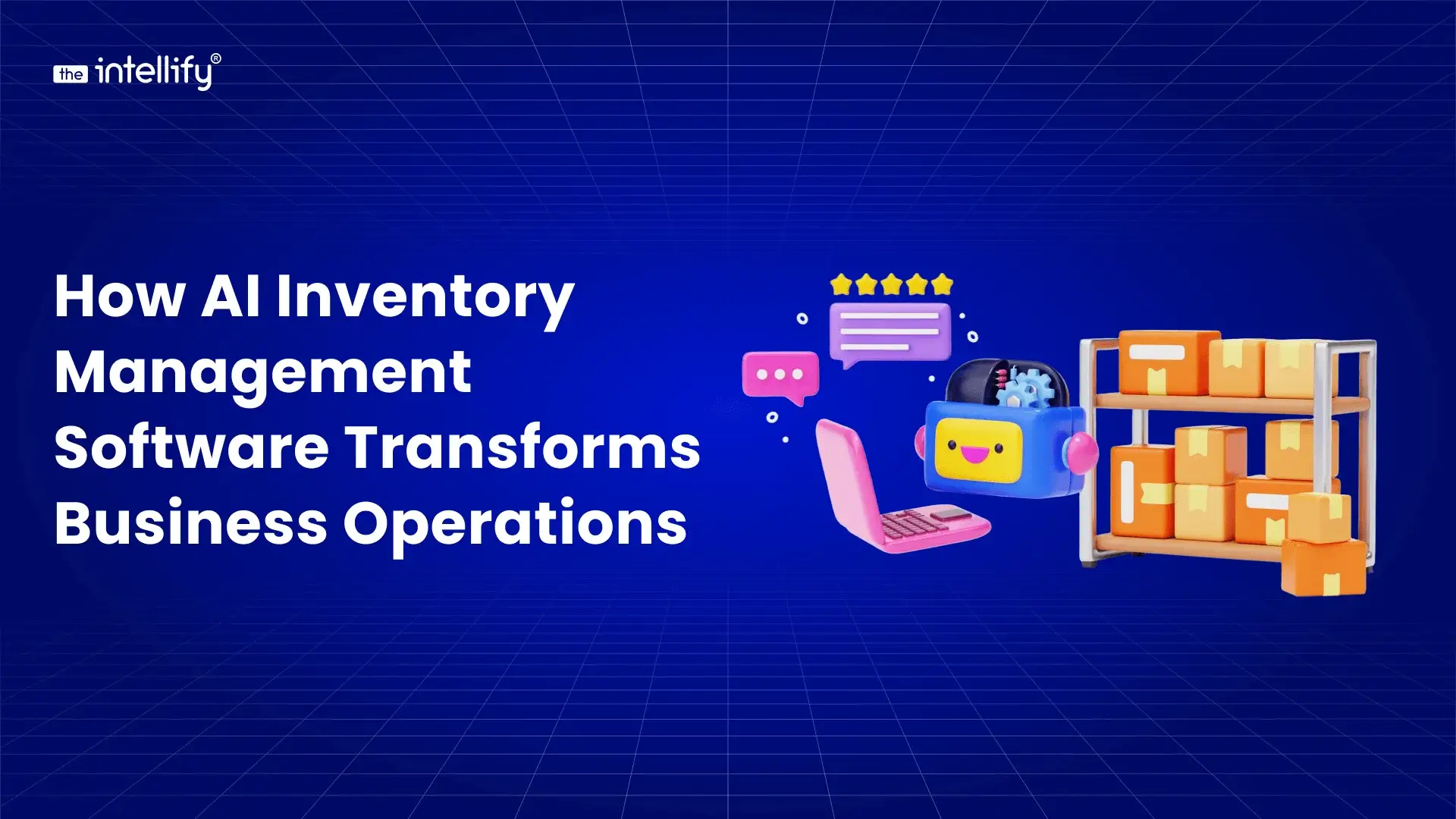

How AI Inventory Management Software Transforms Business Operations
Summary: AI inventory management software is reshaping how businesses handle stock, forecasting, and daily operations. Instead of relying on guesswork or outdated spreadsheets, AI helps companies track inventory in real time, spot trends early, and prevent stockouts or excess stock. This blog explains how AI improves accuracy, lowers costs, and boosts overall efficiency across retail, […]
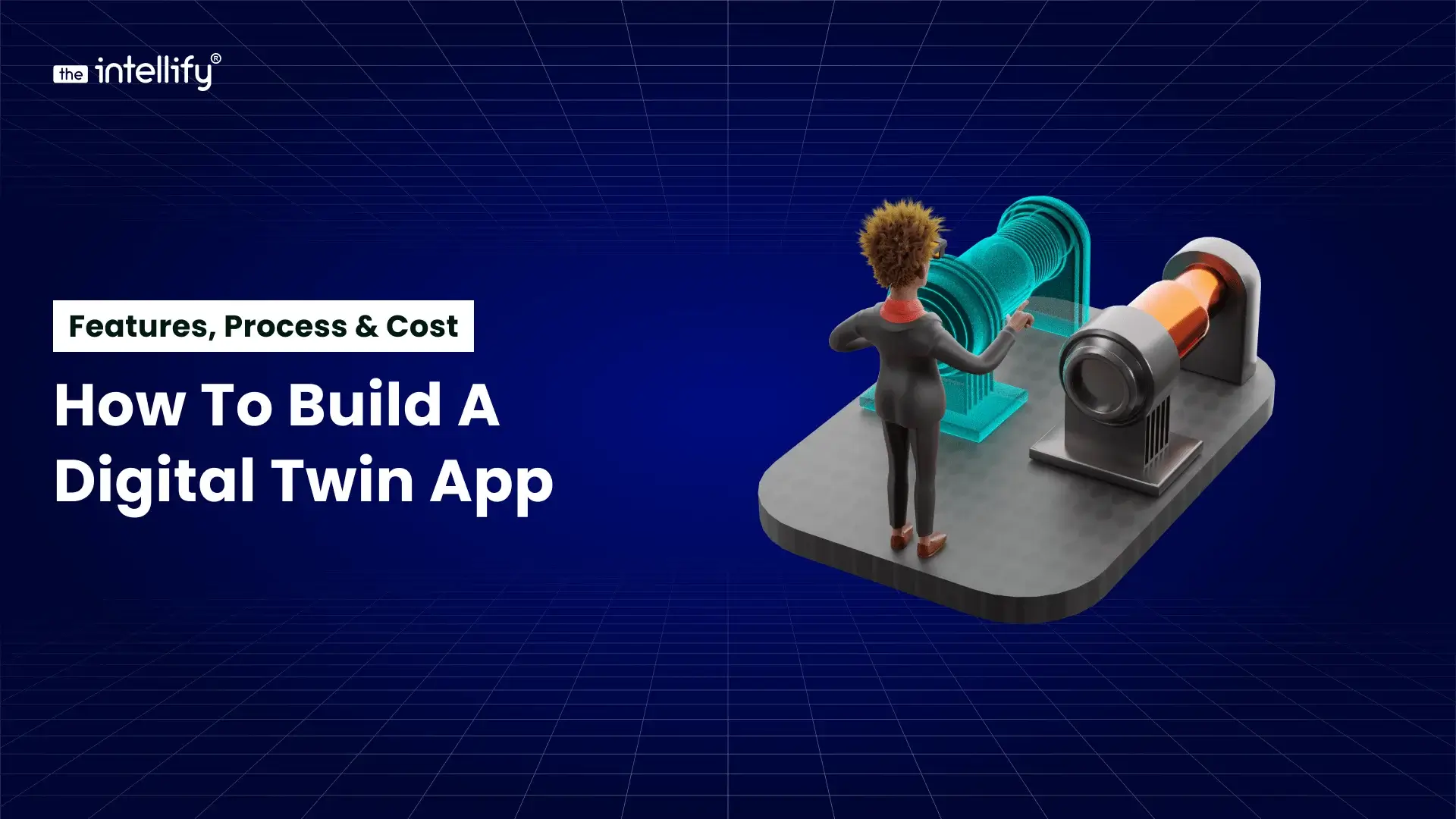

How to Build a Digital Twin App: Features, Process & Cost
Summary: A digital twin app creates a real-time virtual model of a physical asset, which helps businesses monitor performance, predict failures, and make smarter decisions. This blog explains what digital twin apps are, how they work, their key features, and the step-by-step development process. It also covers cost, timelines, challenges, and real industry use cases. […]
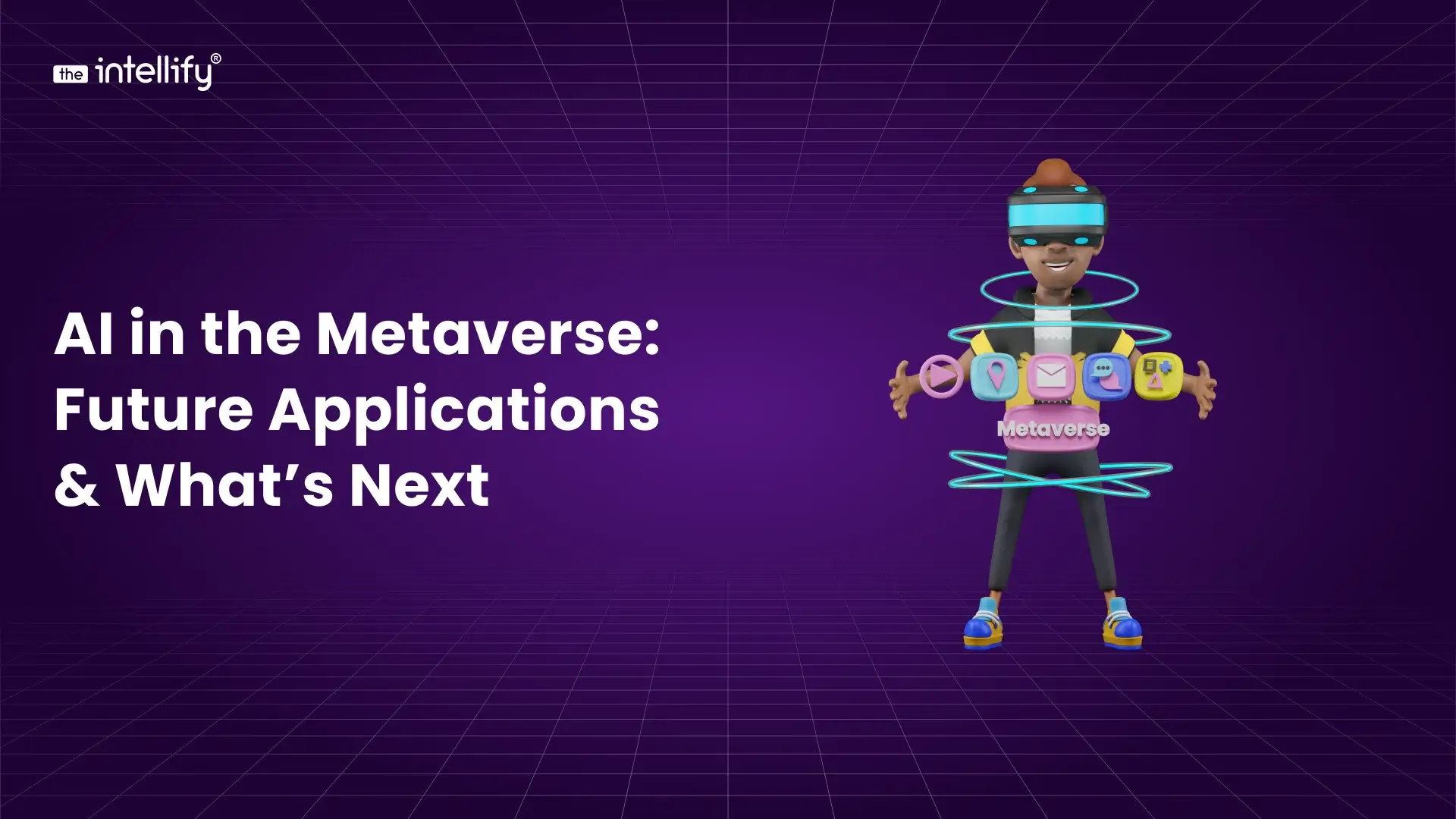

AI in the Metaverse: Future Applications & What’s Next
Summary: This blog explores how AI in the metaverse is slowly reshaping the way we interact with digital spaces. It breaks down how AI personalizes virtual worlds, improves navigation, and makes avatars, environments, and conversations feel more lifelike. You’ll also find practical tips on getting started, plus a look at what the future may hold […]


How AI Inventory Management Software Transforms Business Operations
Summary: AI inventory management software is reshaping how businesses handle stock, forecasting, and daily operations. Instead of relying on guesswork or outdated spreadsheets, AI helps companies track inventory in real time, spot trends early, and prevent stockouts or excess stock. This blog explains how AI improves accuracy, lowers costs, and boosts overall efficiency across retail, […]


How to Build an Immersive Virtual Museum Tour in 2026
Summary: This blog explains how to create a virtual museum tour in 2026, covering everything from choosing the right tour format to planning layouts, capturing 360° or 3D visuals, adding interactive elements, and integrating AR/VR. It also highlights the key features that make a virtual museum experience successful, the technology stack you’ll need, estimated development […]
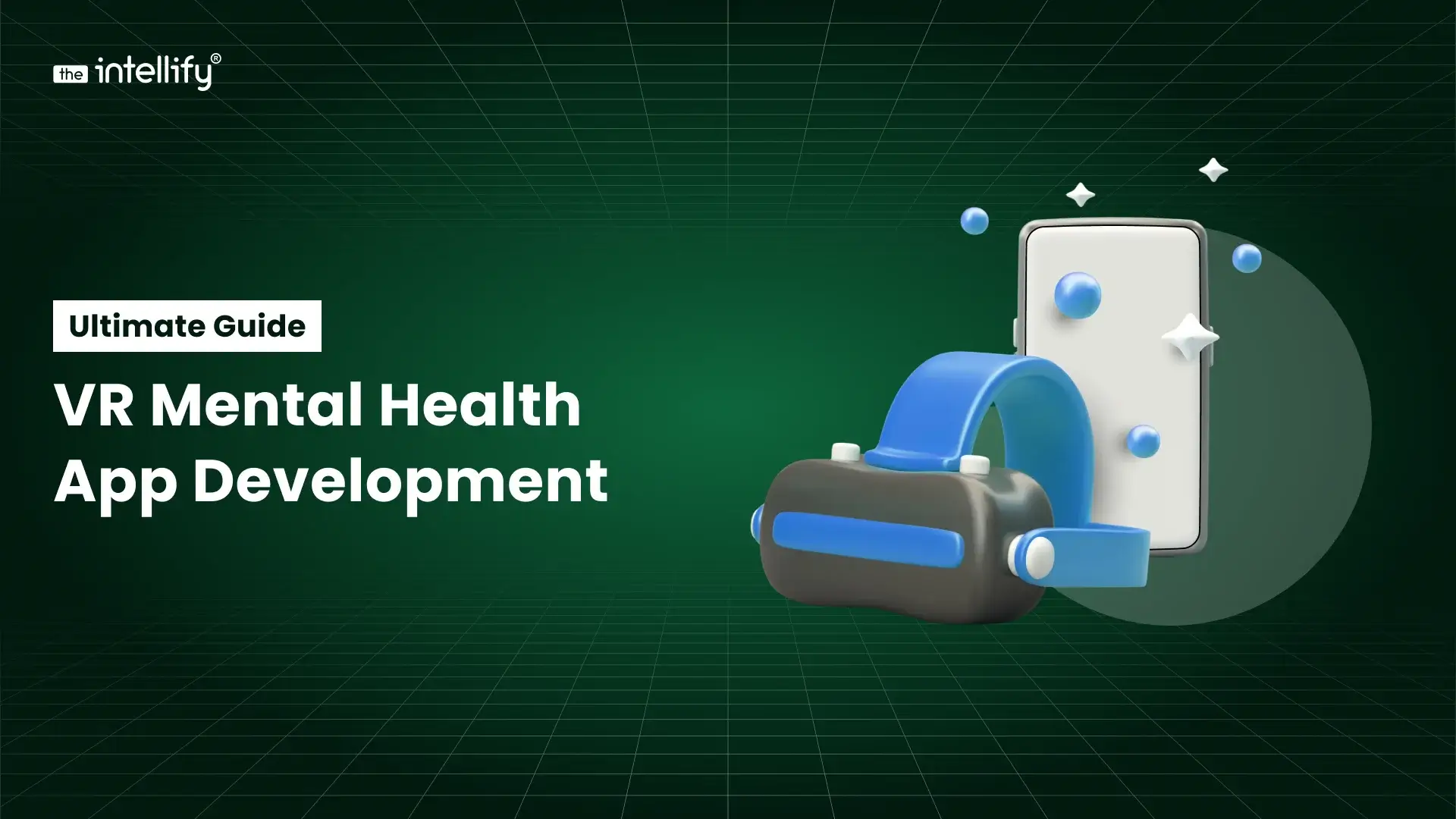

VR Mental Health App Development: Ultimate Guide 2026
Summary: This guide breaks down the essentials of VR mental health app development in a simple, human way. It explains how VR creates safe, immersive spaces for people dealing with anxiety, stress, depression, ADHD, and more. You’ll learn about real use cases, key features, the tech stack, development steps, costs, and what the future of […]
0
+0
+0
+0
+Committed Delivery Leads To Client Satisfaction
Client Testimonials that keep our expert's spirits highly motivated to deliver extraordinary solutions.


